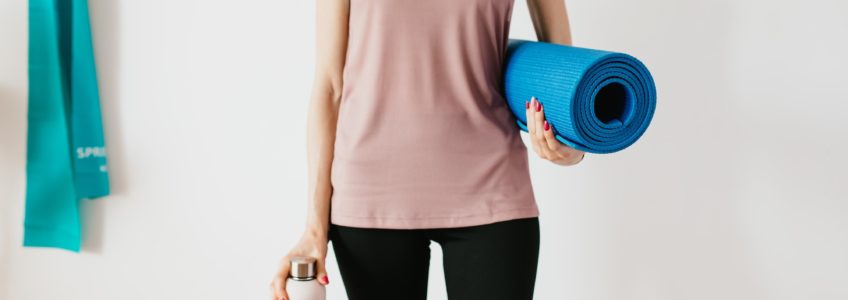
What is endometriosis?
Endometriosis is an often painful disorder in which tissue similar to the tissue that normally lines the inside of your uterus — the endometrium — grows outside your uterus. The endometrial-like tissue acts as endometrial tissue would — it thickens, breaks down and bleeds with each menstrual cycle. But because this tissue has no way to exit your body, it becomes trapped.
Endometriosis can cause extremely heavy and painful periods, painful sex, infertility, fatigue, painful bowel movements or urination, bloating and discomfort, severe pain in the general pelvic area.
– Mayo Clinic [1]
Did you know that…
- 1 in 10 women suffer from endometriosis
- diagnosis can take 10-12 years
- there is no cure, but we know oestrogen [2] and inflammation drive symptoms,
- treatment often requires surgery

It took me 15 years to persuade doctors that they were wrong when they said everything was ‘normal’, and I had to demand surgery to help my symptoms. During that time, the best way I can describe what endometriosis felt like was a mesh wire wrapped around a rock-hard uterus, slowly getting smaller and smaller. Like these squishee balls!
It’s taken a long time, but following the ‘endo diet’, an anti-inflammatory diet similar to paleo, has helped me to nearly eliminated all of my symptoms. I also have the Mirena, a progesterone-based birth control and exercise 4-5 times per week.
I wish I could say diet, exercise and hormones are the answer for everyone, but unfortunately endometriosis attacks everyone differently so what works well for one, may not for another. It has been my experience that you will most likely know more about endometriosis than your doctor, and you’ll certainly know what helps your endometriosis symptoms better than your doctors, which means you will have to self-advocate for care and treatment.
For now, let’s focus on exercise.
How endometriosis impacts your exercise
Like so many conditions, pain and fatigue are two of the most common symptoms of endometriosis, and they’re two of the symptoms that can make exercise the hardest to do. On top of that, some endo experts are developing exercise programmes specially designed for endometriosis sufferers, mostly centred around yoga and Pilates, that can make it feel like you’re doing exercise ‘wrong’ for your endometriosis.
But there’s no right or wrong when it comes to exercising with endo. Like many other conditions, and exercising in general, the best exercise to do is the one you enjoy and want to do. So if you prefer running, or dancing, or lifting weights, check with your doctor that it won’t aggravate anything, and then fire away. Because exercise can be a useful part of your endo management toolbox…
How can exercise help improve the symptoms of endometriosis?
Lowering Oestrogen
Exercise lowers estrogen. The growth of endometriotic lesions is dependent on estrogen. This is supported by the observation that endometriosis symptoms improve when women enter menopause, a phase in which estrogen levels go down. Anything that lowers the levels of estrogen is thought to decrease the growth of endometriotic tissue and reduce pain. [3]
Pain Relief
“I think there are many reasons that exercise can be part of a multipronged strategy to treat endometriosis pain,” says Dr. Agarwal. First, when you work out, you loosen a variety of ligaments and muscles, which allows you to move better in spite of your pain. What’s more, Agarwal says, “exercise can prompt the release of natural opioids-like substances that can help you manage pain.”[4] Exercise also reduces inflammation and “[b]ecause inflammation plays a significant role in the pathology of endometriosis, this might be a further mechanism by which exercise reduces pain.”[5]
Boost Your Mood
We all know that exercise releases endorphins, which improves our mood. This is particularly important because
“There’s naturally a higher incidence of depression and anxiety in people with endometriosis that we believe is actually caused by the endometriosis,” [6] says Hugh Taylor, MD, the chair of obstetrics, gynecology, and reproductive sciences at the Yale School of Medicine in New Haven, Connecticut.
So exercise, particularly vigorous exercise that breaks a sweat and really gets those feel-good hormones flowing, could really make a difference to your mood.
Improving Fatigue
First off, exercise improves your quality of sleep, which can alleviate fatigue. In addition, exercise increases circulation, which is important as “poor circulation is associated with fatigue, cramps, and discomfort.”[7]
Exercise isn’t going to fix or cure your endometriosis, but as it says above, as part of a multi-pronged strategy, it can help to alleviate some of the symptoms. So while you may not feel like it both physically and mentally, the benefits of exercising might entice you to give it a try! Creating a routine can also make the choice to exercise regularly easier.
What adjustments can be made while exercising?
Walking, biking, hiking, dancing, gardening, jogging, strength training, yoga and Pilates are all great options.
Pelvic floor overactivity is common for those with endometriosis so try incorporating pelvic floor exercises and stretches into your fitness routine – an easy way to do this would be to try some of Chronically Awesome’s own pelvic floor pilates classes, which are available both as pre-recorded videos and as live classes each week! Some other examples include squats, floor bridges, bent knee windshield wipers, quadruped arm/leg (bird dog), clamshells, heel drop, deadbugs. Recommended yoga moves include cat/cow, downward dog and happy baby.
Listen to your body to keep moving – it’s important to keep listening to your body to learn your limits, when to push them and when to call time and stop. It may be that you have to start with short, gentle workouts, but as your body becomes more used to exercising, you’re able to increase the frequency, length and intensity of workouts. You’ll also learn what exercises are just a no-no for your endo, and once you know what to avoid, it makes workouts much easier and more enjoyable! Consistency is key to keeping motivated, and to continuing to feel good and making progress.
Don’t be afraid of variety – On days with higher pain levels, do more flexibility/mobility exercises like yoga or Pilates. Avoid high intensity core movements that place pressure on the abdominal wall and lower back (i.e., crunches, running, burpees or jumping exercises). On days when pain levels are lower, consider higher intensity workouts. The variety will not only help you to strengthen your whole body, but will also help prevent boredom in your exercise routine.
Most importantly, listen to your body. If it’s painful, stop.
Got other useful tips? Got questions?
Drop us a comment below or an email at hello@chronicallyawesome.org.uk and we’ll get back to you ASAP.
Useful link and resources
- https://endometriosisnews.com/2017/06/01/six-things-know-endometriosis-exercise/
- https://endometriosis-uk.org/
By Sarah @fitendolife
[1] https://www.mayoclinic.org/diseases-conditions/endometriosis/symptoms-causes/syc-20354656
[2] WebMD: A type of oestrogen called estradiol regulates how your uterine tissue grows. If you have endometriosis, high levels of this hormone can trigger inflammation and symptoms like severe pain. Endometriosis is one of a few oestrogen-dominant conditions that affect women
[3] https://endometriosisnews.com/endometriosis-and-exercise/
[4] https://www.everydayhealth.com/hs/womens-health/exercise-help-endometriosis/
[5] https://endometriosisnews.com/endometriosis-and-exercise/
[6] https://www.everydayhealth.com/hs/womens-health/exercise-help-endometriosis/
[7] https://endometriosisnews.com/endometriosis-and-exercise/

